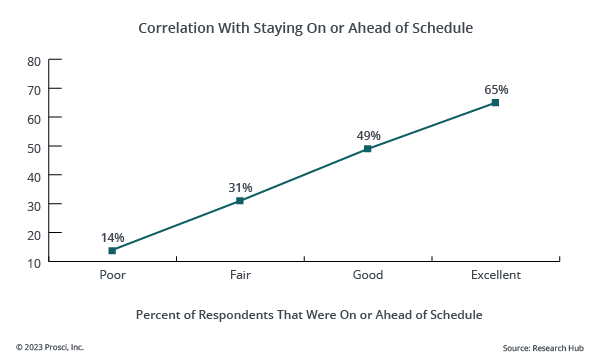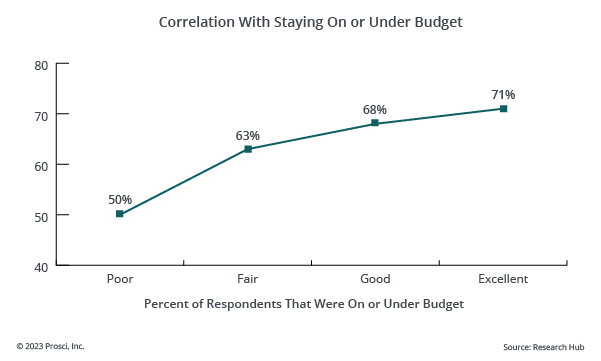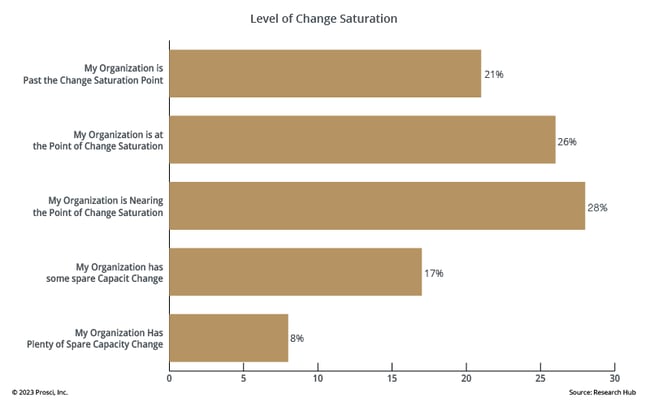Enterprise Change Management

4 Mins
Updated: August 19, 2025
Published: August 23, 2018

The discipline of change management has emerged and evolved over the past decades, and what was once an ad hoc, after-the-fact approach occasionally accompanied by a communications plan or training plan has been replaced by holistic, structured processes with complete toolsets for addressing change management at the individual and organizational level. The result of improved change management has been greater success at delivering objectives on time and on budget.
Today, leading organizations are taking the next step in the journey, shifting their focus from a project-by-project application of change management toward institutionalizing change management practices, processes, capabilities and competencies. Instead of addressing change management one project after another, these organizations are investing time, energy and resources to build organizational change management capabilities and competencies.
Prosci calls this effort enterprise change management (ECM), the structured and intentional deployment of change management across and throughout an organization. With enterprise change management, effectively managing the people side of change becomes more than a business practice—it becomes a core competency, competitive differentiator, and cultural value of the organization.
What is Enterprise Change Management?
Enterprise change management can be described several ways:
- Institutionalizing change management practices, processes, capabilities and competencies
- Building organizational change management capabilities and competencies
- Deploying change management broadly throughout the enterprise
- “Great change management” is second nature and part of the DNA of the organization
- Change management is the organization's standard operating procedure
- Change management is the norm on projects and initiatives
- Change management is an expectation, not an exception
- All employees have internalized their role in leading change
In an organization that has successfully worked to institutionalize change management—or pursue enterprise change management—three things happen:
- The organization consistently and constantly applies common change management processes and tools
- People from the very top of the organization to the front line have the individual competencies in leading change
- The application of change management is a strategic capability
Investing in an
Organizational Change Competency
Institutionalizing change management takes a concerted effort. It requires resources, budget, time and commitment. It requires treating and managing "institutionalizing change management" as a project and as a change. It is not enough to simply apply change management over and over; there must be a fundamental shift and charter to make great change management the norm.
When this shift occurs, change initiatives are more successful and the organization as a whole achieves greater financial and strategic success. Prosci provides organizations the direction, research, thought leadership and tools necessary for creating breakthrough performance by building change management as an organizational core competency.
Business Case for Enterprise Change Management Template
Use our step-by-step guidance and examples to begin constructing your case
with supporting data and Prosci research.
Why Take on
Enterprise Change Management?
The simple answer to why an organization should invest in enterprise change management is that it improves the financial and strategic performance of the organization through more successful change implementations. There are several approaches to telling the story and making the case for deploying change management:
Bringing project success to the organizational level
Effective change management on a particular project or initiative drives greater benefit realization. A growing body of data shows that there is a direct correlation between more effectively managing the people side of change and meeting project objectives on time and on budget.

 When change management is done effectively, the result is faster speed of adoption, higher ultimate-utilization rates, and a greater level of proficiency, which all drive higher return on investment (ROI). When the people side of change is ignored, there are greater costs and risks both to the project and to the organization.
When change management is done effectively, the result is faster speed of adoption, higher ultimate-utilization rates, and a greater level of proficiency, which all drive higher return on investment (ROI). When the people side of change is ignored, there are greater costs and risks both to the project and to the organization.
So, the first case for enterprise change management is additive in nature. If effective change management drives success on a given project, then why not begin applying change management on more (or all) projects by deploying it more broadly across the organization?
Building capacity for constant change
The second case for working to build organizational capabilities and competencies is based on change load. Organizations are experiencing and expecting more change than ever before. The velocity of change continues to increase with more frequent, larger and more imperative changes. In an environment where change is constant and unavoidable, the time is right to build a capability to more efficiently and effectively implement those changes, and institutionalizing change management is one solution.
Lowering change saturation
Prosci's Best Practices in Change Management benchmarking data shows that more and more organizations are reaching a point of change saturation. The percentage of participants reporting being near or past the point of saturation has risen dramatically, from 59% in 2007 to 75% in 2023. One approach for addressing the consequences of change saturation is to more effectively manage each effort in the change portfolio.

Applying change management more efficiently and effectively
A common organizational standard for change management is more effective than allowing each project to address change management on its own. The advantages of deploying change management from an enterprise perspective include:
- Common language
- Common tools
- More consistent application
- Ability to draw on shared resources
- Shorter learning curves
- Ability to continuously improve
This case for institutionalizing change management parallels the case used for deploying any common approach in the organization. Change management is done more efficiently and effectively when there is an organizational standard in place.
Achieving impressive project results
The final case for tackling enterprise change management is more of an emotional story than an academic one. Some people want to rely on data to make the case. However, when asked about approaches for justifying change management, study participants identified the use of scenarios and examples as the most effective tactic.
Many organizations have started the ECM journey based solely on a single project that went very well (because change management was applied) or very poorly (because the people side of change was ignored). Once project leaders or senior leaders consider change management as something enhances outcomes of an initiative, they have personally made the case for broader deployment of change management.
The Key to Succeeding in
Enterprise Change Management
One of the biggest keys to succeeding in enterprise change management is treating and managing "institutionalizing change management" as a project and as a change. Many organizations have struggled to truly build change management capabilities and competencies, even when they have been successful at applying change management on particular initiatives, because they never hit the seminal moment when the mindset shifts from "applying change management on Project X" to "institutionalizing change management practices, processes, capabilities and competencies."
To help organizations make this shift, Prosci uses the term "Project ECM" to describe the effort to deploy change management broadly throughout an enterprise. The use of "project" is intentional because the effort to institutionalize change management is fundamentally changing how changes are implemented in the organization. A solution for institutionalizing change management must be designed, developed, deployed, embraced and adopted to reach a point where change management is the norm.
Start to Address Project ECM
Using of a framework for the fundamental change process—current state, transition state, future state—for Project ECM provides the basic structure to start with:
- Assess the current state (how change management occurs today)
- Define the future state (how the organization will look once the capabilities and competencies are in place)
- Design the technical side of the transition state (the solution for institutionalizing change management)
- Design the people side of the transition state (how to build buy-in and commitment for change management)



